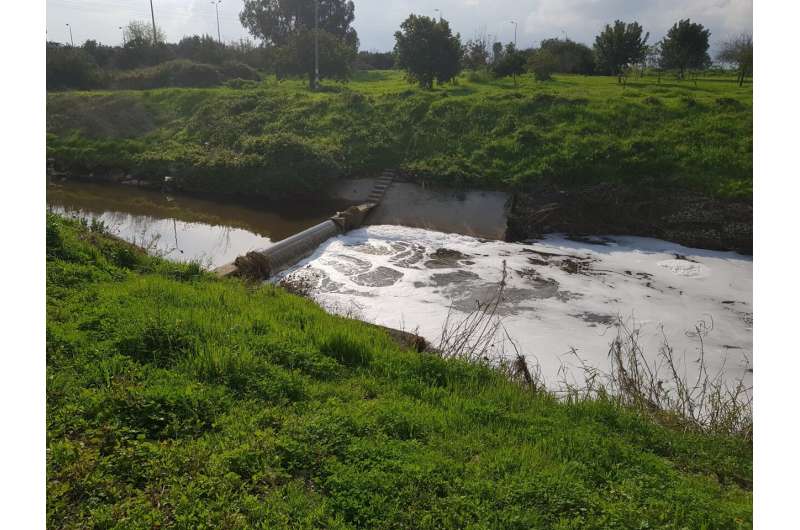This article has been reviewed according to Science X's editorial process and policies. Editors have highlighted the following attributes while ensuring the content's credibility:
fact-checked
peer-reviewed publication
trusted source
proofread
Alarming levels of PFAS contamination found in small coastal ecosystems

Micro-estuaries, often overlooked but vital ecosystems supporting biodiversity and enhancing human life quality in densely populated areas, play a crucial role in controlling the transfer of pollutants from land to sea. A new study investigating the occurrence, distribution, and associated risks of per- and polyfluoroalkyl substances (PFAS) in three micro-estuaries during the dry season has been undertaken.
The study was led by Dr. Tom Topaz from the Ruppin Academic Center and Prof. Benny Chefetz and Noam Gridish from Hebrew University, along with the Israeli Estuarine Research Center team in collaboration with the National and Kapodistrian University of Athens. The research paper, "Exploring PFAS in micro-estuaries: Occurrence, distribution and risks," is published in Environmental Science & Technology Letters.
In a comprehensive analysis of 120 samples, the study revealed alarming concentrations of PFAS in the studied estuaries, indicating a global-scale issue. The total PFAS concentration at these sites was remarkably high, with maximum and median concentrations of 17.4 and 3.4 µg L-1, respectively—significantly exceeding recommended benchmarks for aquatic ecosystems and recreational activities.
Wastewater effluents, notably those originating from industrial zones housing refinery facilities, have been pinpointed as a significant contributor to PFAS contamination, leading to point source pollution.
PFAS is prevalent in fire extinguishing foam used in various settings, including airports, refineries, and industrial zones. The research underscores the critical necessity for focused interventions to address the impact of PFAS, particularly in regions where micro-estuaries coincide with industrial activities.
To enhance PFAS identification originating from wastewater, the researchers recommend using carbamazepine as a steady indicator, proving valuable in scenarios of limited dilution by natural riverine water.
Despite similarities in characteristics among the three studied micro-estuaries, such as morphology, precipitation, watershed size, and water volume, the study highlights how changes in water input, connectivity to the sea, and local anthropogenic activities can dramatically alter the occurrence, concentrations, and distribution of PFAS. Micro-estuaries, due to their susceptibility to intensive anthropogenic activity, face high ecological risks from PFAS pollution.
The study emphasizes the urgent need for targeted environmental management strategies to safeguard micro-estuaries from PFAS contamination. This research not only contributes to our understanding of PFAS dynamics in micro-estuaries but also underscores the importance of comprehensive environmental monitoring and regulatory measures to protect these critical ecosystems.
More information: Tom Topaz et al, Exploring Per- and Polyfluoroalkyl Substances (PFAS) in Microestuaries: Occurrence, Distribution, and Risks, Environmental Science & Technology Letters (2024). DOI: 10.1021/acs.estlett.3c00882
Journal information: Environmental Science & Technology Letters
Provided by Hebrew University of Jerusalem





















